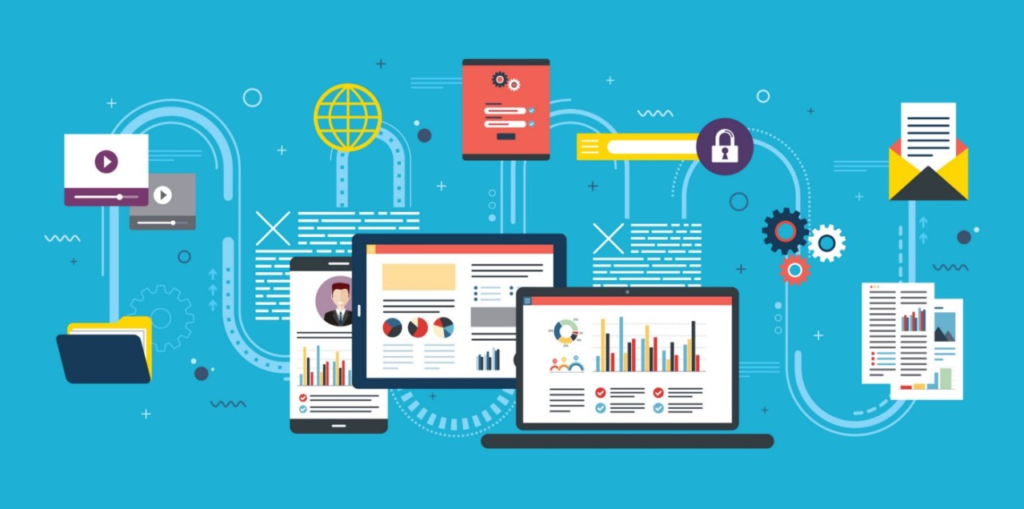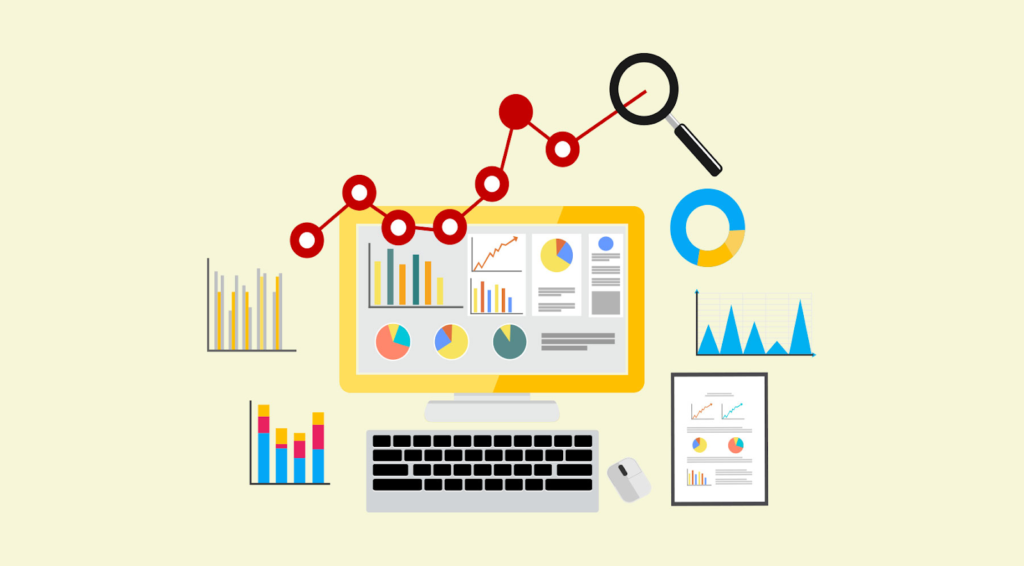It’s essential for businesses to have a strong online presence in today’s digital landscape. Performance marketing and content marketing are two essential strategies that may help businesses reach their goals. In this blog post, we’ll explore the role of content marketing in performance marketing and how these two strategies intersect to drive business results.
Introduction :
The process of creating and distributing useful, relevant, and consistent material in order to draw in and keep a target audience is known as content marketing. On the other side, performance marketing is a tactic that focuses on achieving measurable outcomes through paid advertising campaigns.
While these two approaches may seem different, they actually complement each other quite well.
Building credibility with potential clients and increasing brand exposure are two of content marketing’s main objectives. Businesses can attract an audience and build trust by producing high-quality content that addresses their problems and adds value.
Performance marketing, on the other hand, is concentrated on attaining particular company objectives, like generating leads or raising sales, and driving conversions.
Understanding Content Marketing
Understanding what content marketing is and why it’s essential will help you understand the position that content marketing plays in performance marketing.
What is Content Marketing?

Content marketing is a strategic approach to creating and distributing content that’s designed to attract and retain a clearly defined audience. This can include articles for blogs, updates on social media, infographics, movies, audio podcasts, and more.
Whether in the form of knowledge, amusement, or inspiration, the content is intended to benefit the audience.
There are several reasons why content marketing is important.
It can first and foremost help businesses in developing authority and reputation within their sector.
Businesses can establish themselves as authorities in their industry by producing high-quality content that appeals to the needs of their target audience.
Types of Content Marketing

There are many different types of content marketing, including:
- Blog posts
- Infographics
- Social media marketing
- Videos
- Podcasts
- Whitepapers
- Case studies
- E-books
- Webinars
- Email newsletters
- Interactive content
- User-generated content
- FAQs
- Testimonials
- Product reviews
Some of the key benefits of content marketing include:

1. Increased brand awareness: Awareness of brands may be increased by businesses by engaging and attracting potential customers through the creation of helpful and timely content.
Example: Red Bull’s content marketing campaign, which includes extreme sports videos and articles, has helped to build the brand’s reputation as an adventurous and daring company.
2. Gain Trust & Credibility: Businesses can gain the trust of and develop a relationship with their consumers by producing content that speaks to the wants and interests of the target audience.
Example: Salesforce’s Trailhead program, which provides free online courses and tutorials for customers, has helped to establish the company as a helpful and supportive partner for businesses.
3. Enhanced search engine visibility: By creating high-quality content that is optimized for search engines, businesses can improve their search engine rankings and attract more organic traffic to their website.
Example: HubSpot’s blog, which provides valuable information and insights on marketing and sales topics, has helped the company to rank highly in search engine results for relevant keywords.
4. Increased website traffic: Businesses can improve website traffic through their creation and promotion of content, which can result in more leads and sales.
Example: The Home Depot’s content marketing campaign, which includes how-to guides and videos on home improvement topics, has helped to attract more traffic to the company’s website and increase sales.
5. Cost-effective marketing: Because it enables companies to engage with and reach their target audience without the high costs of advertising, content marketing can be a more affordable alternative to traditional advertising.
Example: Blendtec’s “Will It Blend?” video series, which features the company’s blenders blending unusual items, went viral and helped to increase the company’s sales without the need for expensive advertising.
Understanding Performance Marketing
Performance marketing is a data-driven approach to digital marketing that focuses on achieving specific business goals. This can involve generating leads, making sales, installing apps, or taking any other crucial business-related action.
What is Performance Marketing?

The main goal of performance marketing is to achieve results. Performance marketing measures success by specific actions taken by the target audience, compared to traditional marketing, which measures success by impressions or reaches.
This might involve submitting a form, clicking on an advertisement, or buying something.
Why is Performance Marketing Important in Business?
Because it enables companies to narrow down their advertising efforts to the strategies most likely to produce results, performance marketing is essential. Businesses can increase their return on investment and more effectively achieve their objectives by using data to maximize marketing.
1. PPC advertising: When a user clicks on one of a sponsor’s ads, the advertiser is charged. These kinds of advertisements are frequently seen on search engines and social media websites.
Example: Google Ads, where advertisers bid on keywords related to their business, and their ads are shown to users who search for those keywords.
2. Affiliate marketing: When a customer is directed to an advertiser’s website by an affiliate and makes a purchase, the advertiser pays the affiliate a commission.
Example: Amazon Associates, where website owners can earn a commission by promoting Amazon products and driving sales through their affiliate link.
3. Email marketing: Businesses use email marketing to advertise their goods and services by sending promotional messages to a list of subscribers.
Example: Airbnb’s email marketing campaign, where the company sends personalized emails to users based on their search history and previous bookings.
4. Influencer marketing: In influencer marketing, businesses partner with social media influencers to promote their products or services to their followers.
Example: Nike’s partnership with basketball player LeBron James, where he promotes Nike products to his millions of social media followers.
5. Retargeting: In retargeting, businesses show ads to users who have previously visited their website or engaged with their brand.
Example: Amazon’s retargeting campaign, where the company shows ads for products that users have viewed or added to their cart but not purchased.
6. Performance-based advertising: In performance-based advertising, advertisers only pay when a specific action, such as a lead or sale, is generated.
Example: Lead-generation campaigns, where businesses pay for each lead generated through their ads or landing pages.
Top Channels for Performance Marketing

1. Google Ads: Google Ads is a platform for pay-per-click (PPC) advertising that enables companies to display advertisements on Google’s search engine results pages and partner websites.
It is a channel that can help businesses generate traffic, leads, and sales because it is highly targeted and measurable.
2. Facebook Ads: Facebook Ads is a platform for social media advertising that enables companies to design and publish advertisements on Facebook and Instagram.
On the basis of user demographics, interests, behaviors, and retargeting, it provides advanced targeting choices.
3. Affiliate marketing: Affiliate marketing is a performance-based marketing strategy in which companies collaborate with affiliates to sell their goods or services in return for a commission.
It may be a cost-effective strategy to increase sales and reach new markets.
4. Email marketing: Email marketing: a channel for promoting products and offerings and nurturing leads, email marketing enables companies to send subscribers customized and personalized emails.
It might be a good way to increase sales and grow customer relationships.
5 . SEO: The process of improving a website’s content and structure so that it appears higher on search engine results pages is known as search engine optimization or SEO.
It is a long-term tactic that can increase a company’s organic traffic, leads, and sales.
6. Influencer Marketing: Influencer marketing is a strategy used by companies to sell their products and services to the followers of social media influencers.
It can be a useful way for increasing brand recognition, boost sales, and attracting new customers.
Overall, the best performance marketing channel depends on the business’s goals, target audience, and available resources.
The Intersection of Content Marketing and Performance Marketing

Despite having distinct characteristics, content marketing and performance marketing actually support each other quite well.
By increasing brand recognition, establishing credibility, and maintaining long-term engagement with the target audience, content marketing can support performance marketing. Performance marketing, on the other hand, can increase conversions and achieve specific business goals.
Why do Content Marketing and Performance Marketing Work Well Together?
The fact that performance marketing and content marketing focus on various phases of the consumer journey makes them competitive.
Performance marketing aims to generate conversions and achieve certain corporate objectives, whereas content marketing is particularly effective at attracting and attracting potential customers.
1. Building brand awareness: Companies may increase their visibility and credibility by producing high-quality content that speaks to the demands of their target market. This will help them later on when looking to generate conversions.
2. Keeping the target audience interested: By consistently delivering good material, organizations may keep the audience interested over time, which can boost the success of their performance marketing initiatives.
3. Driving Traffic: Content marketing can help drive traffic to a website or landing page, which is essential for performance marketing campaigns that rely on traffic to generate conversions.
Businesses can attract visitors to their websites and improve their chances of turning them into customers by producing high-quality and interesting content.
4. Improve SEO: By producing high-quality, relevant content that is search engine optimized, content marketing may help with SEO strategies.
Businesses may improve their chances of ranking higher in search engine results pages, which can result in more organic traffic and conversions, by developing content that focuses on specific keywords and topics.
Examples of Successful Content Marketing and Performance Marketing Campaigns
There are many examples of successful content marketing and performance marketing campaigns, including:
1. HubSpot’s inbound marketing campaign uses content marketing to attract and engage potential customers and performance marketing to drive conversions and achieve specific business goals.
2. Dollar Shave Club’s viral video campaign used content marketing to build brand awareness and establish credibility, and performance marketing to drive conversions and sales.
3. Airbnb’s social media campaign used content marketing to share inspiring travel stories and establish a connection with potential customers, and performance marketing to drive bookings and revenue.
In conclusion,
Content marketing and performance marketing are two essential strategies that can help businesses achieve their goals in the digital landscape. By understanding the role of each strategy and how they intersect, businesses can create effective campaigns that drive measurable results.


